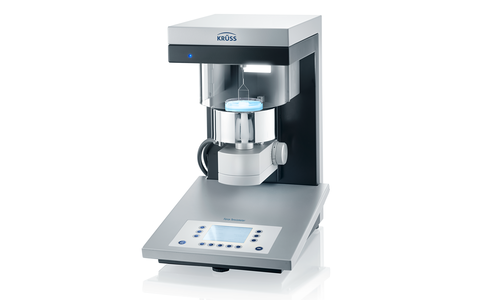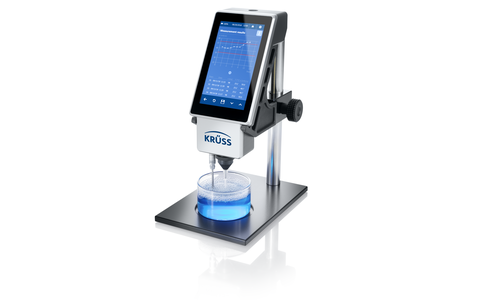
Production of latex
Investigations into the wetting of immersion molds and into dispersion and emulsion stability
Latex is usually an aqueous polymer dispersion for the manufacture of elastic materials or as a binder or adhesive. Surfactants are used to wet immersion molds and to stabilize the dispersion.
Our interfacial chemical measuring instruments support quality assurance in the manufacture of stable polymer dispersions and help to optimize recipes. Separate surface analyses of the solution and the solid, powdery polymers provide initial data for specific adjustment of the mixture.
Wetting of immersion molds
Good wetting of the mold by the liquid is important when it is immersed in the polymer dispersion. Surfactants which reduce the surface tension of the solution are used for this purpose. Our surface tension measuring instruments help in quality control and precisely check compliance with specified limits. Force Tensiometers can characterize the efficiency of surfactants fully automatically based on the critical micelle concentration (CMC). This specifies the surfactant content for the maximum reduction in surface tension. In addition, the wettability and surface free energy of the coating can be determined using our contact angle measuring instruments. The work of adhesion determined in this way describes the adhesion to the mold. This should be as small as possible to enable the product to be released cleanly after drying.
Investigation of stabilizers and polymer powders
Surfactants also play an important role in stabilizing the dispersion, as the polymer particles tend to coagulate. This risk is lower the better the wetting and the smaller the interfacial tension between polymer and solution. As well as the surface tension of the aqueous phase, a Force Tensiometer can also determine the surface free energy of the solid powder using the Washburn method. This produces an overall picture of the interface between powder and solution which enables individual parameters to be specifically adjusted.
Interfacial tension measurement for emulsion polymerization
Polymer dispersions are frequently obtained by emulsion polymerization in the aqueous phase. The added surfactants are also responsible for the stability of this emulsion. In addition, the interfacial tension affects the droplet size and therefore also the size of the particles in the polymer. Our force sensor tensiometers feature accurate methods for measuring the interfacial tension. The time which surfactants need to reduce the interfacial tension of the newly formed interface depends on the mobility of the molecules. In order to model the fast mixing process, a drop volume tensiometer measures the dynamic interfacial tension over a large interface age range.
Investigation of foam formation
Foam formation is an undesirable possible side-effect of adding surfactants in latex production. Our foam analysis instruments have methods for reproducibly measuring the foamability and foam stability of surfactant solutions and emulsions. The effect of anti-foaming agents can also be quantified using our measuring equipment.





